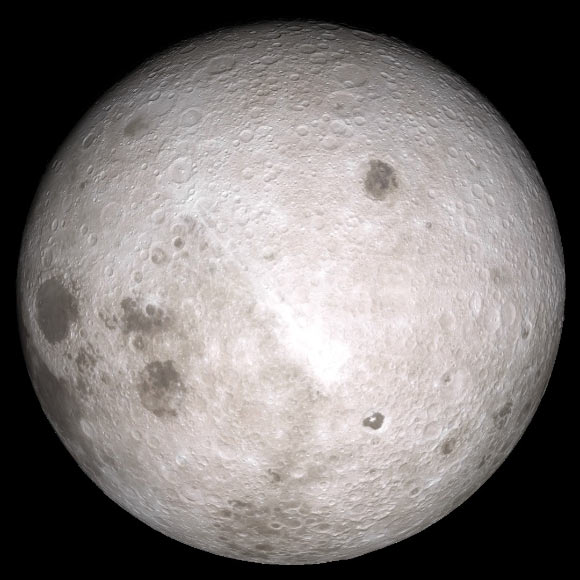Using data from the Lunar Reconnaissance Orbiter, NASA scientists have created a detailed visual simulation of the dark side of the Moon, the side that can’t be seen from the Earth.
Just like the near side, the far side goes through a complete cycle of phases.
But the terrain of the far side is quite different. It lacks the large dark spots, called maria, that make up the familiar Man in the Moon on the near side.
Instead, craters of all sizes crowd together over the entire far side.

Far side of the Moon. Image credit: NASA’s Goddard Space Flight Center Scientific Visualization Studio.
The far side is also home to one of the largest and oldest impact features in the Solar System, the South Pole-Aitken basin, visible here as a slightly darker bruise covering the bottom third of the disk.
The far side was first seen in a handful of grainy images returned by the Soviet Luna 3 probe, which swung around the Moon in October, 1959.
Luna 3 was the third spacecraft to reach the Moon. The pictures of the far side were noisy and indistinct, but because the Moon always presents the same face to the Earth, they offered views of a part of the Moon that had never been seen before.
Lunar Reconnaissance Orbiter was launched fifty years later, in June of 2009, from Kennedy Space Center in Florida, and since then it has returned hundreds of terabytes of data, allowing scientists to create extremely detailed and accurate photographic mosaics and global elevation maps of the far side.







